Updated 3 Mar 24 (amount of ingredients updated)
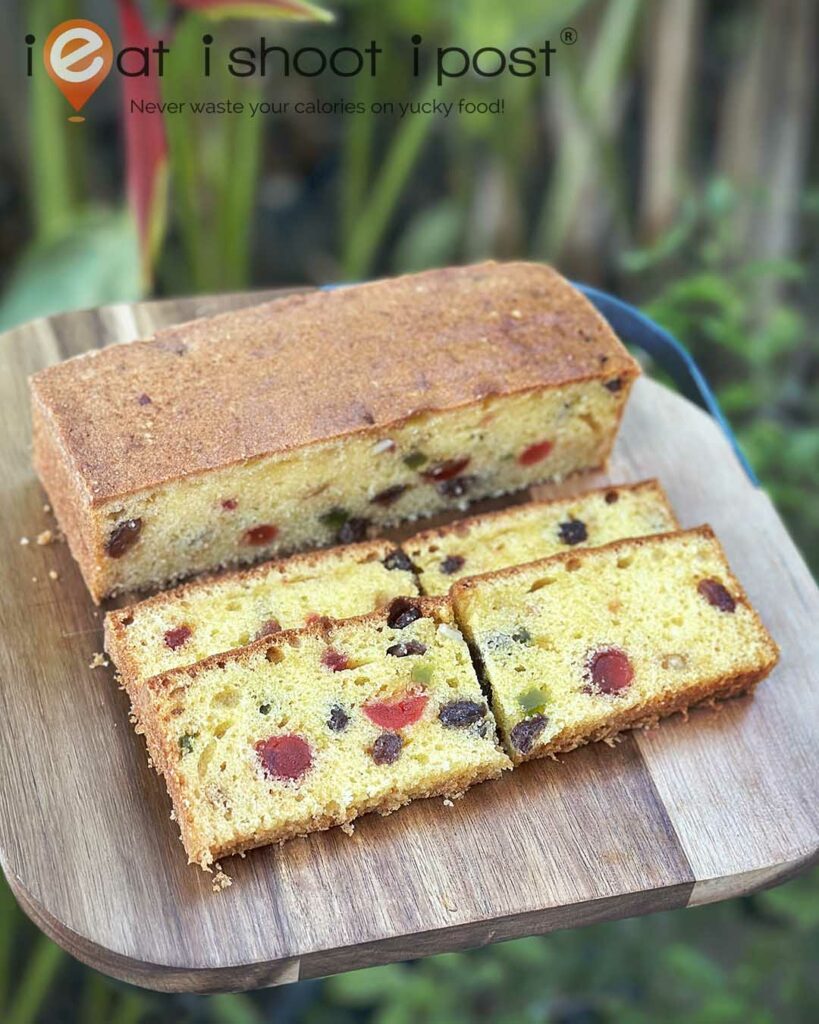
The Home Baker’s Conundrum
This is one of the biggest baking conundrums for this home baker.
How to prevent dried fruit from sinking to the bottom of your light and fluffy butter (pound) cake?
I know this is a question faced by many homebakers. If you do an online search for the answer, you will get many sites that confidently tout a surefire technique for preventing fruits from sinking. Here are some of the most commonly suggested solutions:
1. Toss the dried fruit in flour
2. Cut the fruit into smaller pieces
3. Pour the batter into the pan first then sprinkle fruit on top
4. Freeze the batter before baking
5. Wash the dried fruit in hot water to remove oily coating
6. Soak the dried fruit in alcohol
7. Start cooking the cake batter first and add the fruit halfway through the baking process
The commonly accepted explanation is that dried fruit sinks to the bottom of the cake due to the layer of oil on its surface. To prevent this, one should coat the dried fruit with flour, which absorbs the oil and prevents it from sliding to the cake’s bottom. Another method is to remove the oil layer by rinsing it with hot water or soaking it in alcohol.
I tried all these methods and the dried fruit still sank to the bottom.
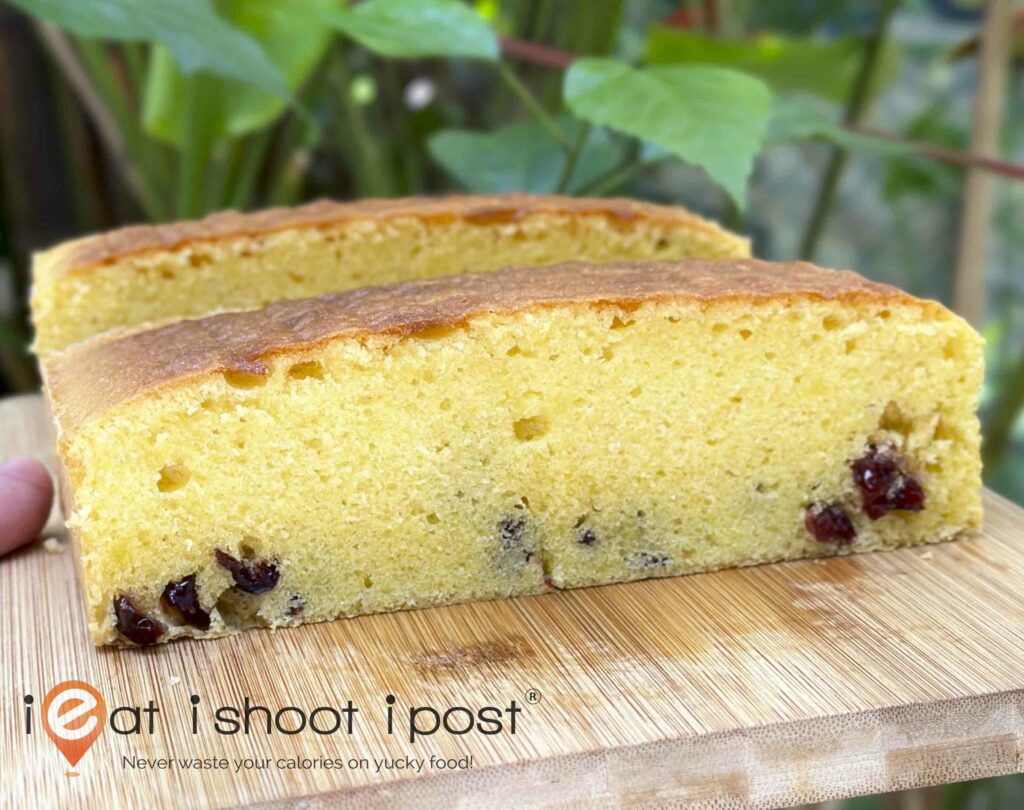
The conclusion I drew from my experiments is that the main reason that the fruit sinks is that the batter is not thick enough to hold up the fruit during the baking process!
The Real Solution to the Problem
So, the real solution to prevent fruit from sinking is:
1. Change the cake batter so that it is thicker and can support the fruit
2. Add so much fruit that there isn’t any space for the fruit to sink (like a Christmas fruit cake)
But, I had spent a lot of time perfecting my butter cake so that it is rich and flavourful, and yet light and airy. To make the batter thicker would mean I have to add more flour and less butter. That might hold up the fruit but the texture would be altered.
There are a few recipes for light fruit cake online which suspend the fruit by flouring it first but the batter usually has more flour and less butter in it. I needed to find a way to prevent the fruit from sinking, yet retain the same buttery light texture of the cake!
Why Does the Dried Fruit Sink?
Fruit sinks when the batter is not viscous ie, thick enough. As the temperature of the batter rises during the cake’s baking process, the butter begins to melt, causing the batter to become more liquid. This is when the fruit starts to sink. As the temperature continues to increase, the eggs begin to coagulate, the flour starts to gel, and the batter thickens, eventually setting at around 65°C. It is during the temperature range between 32°C (the melting point of butter) and 65°C that the fruit gradually sinks to the bottom. To prevent the fruit from sinking, we need to find a way to thicken the batter as the butter melts.
The Hypothesis: Pre-Cook The Batter to Thicken It First
I was determined to maintain a consistent proportion of butter, flour, and eggs to ensure that the butter cake would have the same texture and mouthfeel. One approach might be to precook the batter and introduce the fruit when the eggs and flour begin to thicken. However, this proved challenging because the top layer of the cake would dry up and form a crust before this occurred.
Then I had a thought: How about if we cook the flour first? In bread baking, we sometimes use a tangzhong, where the flour is mixed with water and heated until it turns into a gel before it’s added to the dough. Tangzhong helps retain more water in the bread dough while making the high-hydration dough easier to work with. What if we could pre-cook some of the flour so that the gel could thicken the batter when the butter starts melting?
Then I thought that perhaps I could find a way to avoid actually cooking the flour by using pre-gelatinized starch. Pre-gelatinized starch is essentially starch that has been hydrated, cooked, dried, and milled into a powder. You can easily transform it back into a gel just by adding cold water. You can purchase this product at specialty baking supply shops like Redman. I couldn’t find any recipe online using this technique but I’m certain that it must be known among the commercial bakeries.

In my first attempt, I substituted 50g of cake flour with pre-gelatinized starch. After mixing the batter, I poured half of it into the cake pan, then mixed the raisins into the other half of the batter and added it to the top of the first batter. I thought the pre-gelatinized starch would slow down the sinking of the raisins but it actually worked so well that the raisins remained on top of the cake! It was my “Eureka!” moment when I realized that my hypothesis actually worked!
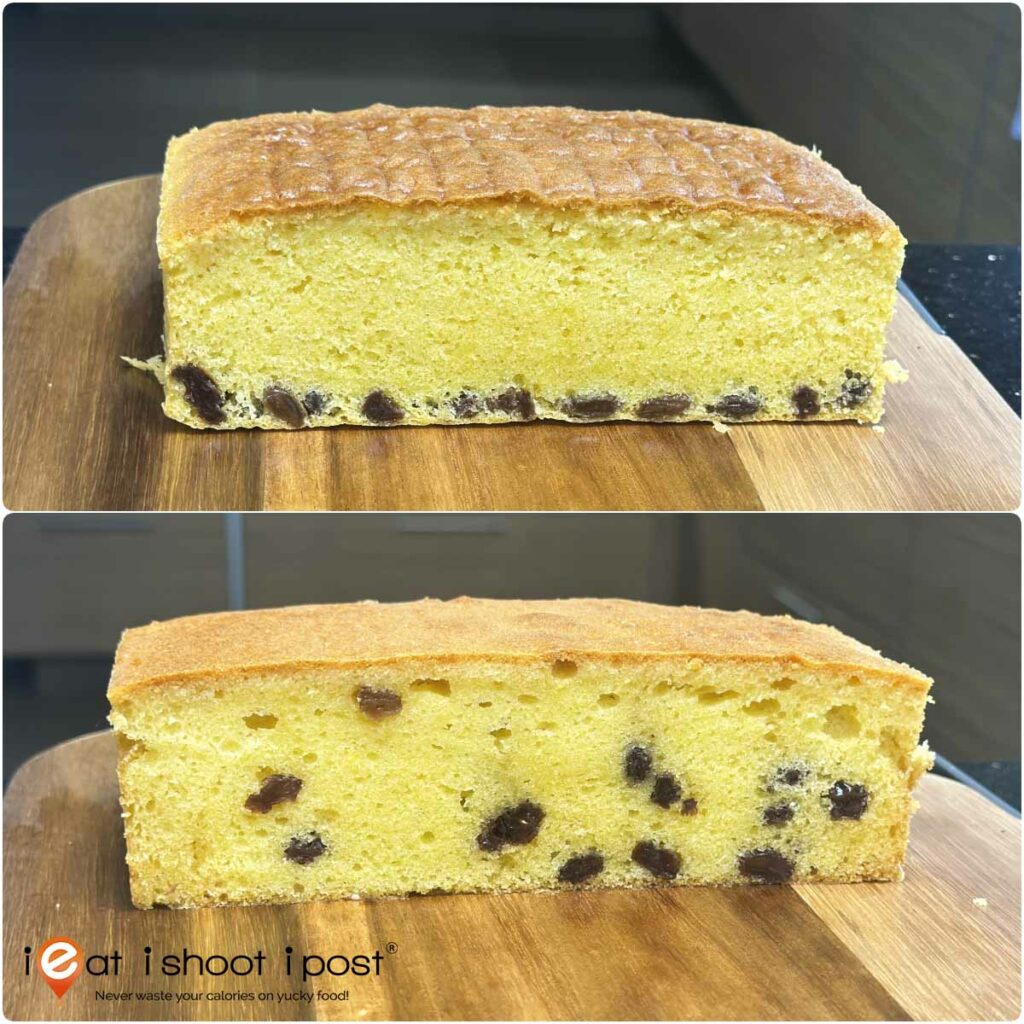
I wanted to double confirm that my idea worked, so I baked two cakes in exactly the same way but with one I substituted 20g of the cake flour with pre-gelatinized flour (2.5% of batter). As you can see from the photo above, the difference is quite stark. The one with pre-gelatinized flour managed to prevent the fruit from sinking to the bottom, but there were more raisins at the bottom half of the cake. (I had used less pre-gelatinized starch) The cake also didn’t rise quite as high as the one without the pre-gelatinized flour but the texture was still light and fluffy. I made a few more cakes to fine-tune the amount of pre-gelatinized flour and finally settled on 30g pre-gelatinized flour which is approximately 3.7% of the weight of the batter. (I think 25-30g would be the sweet spot)
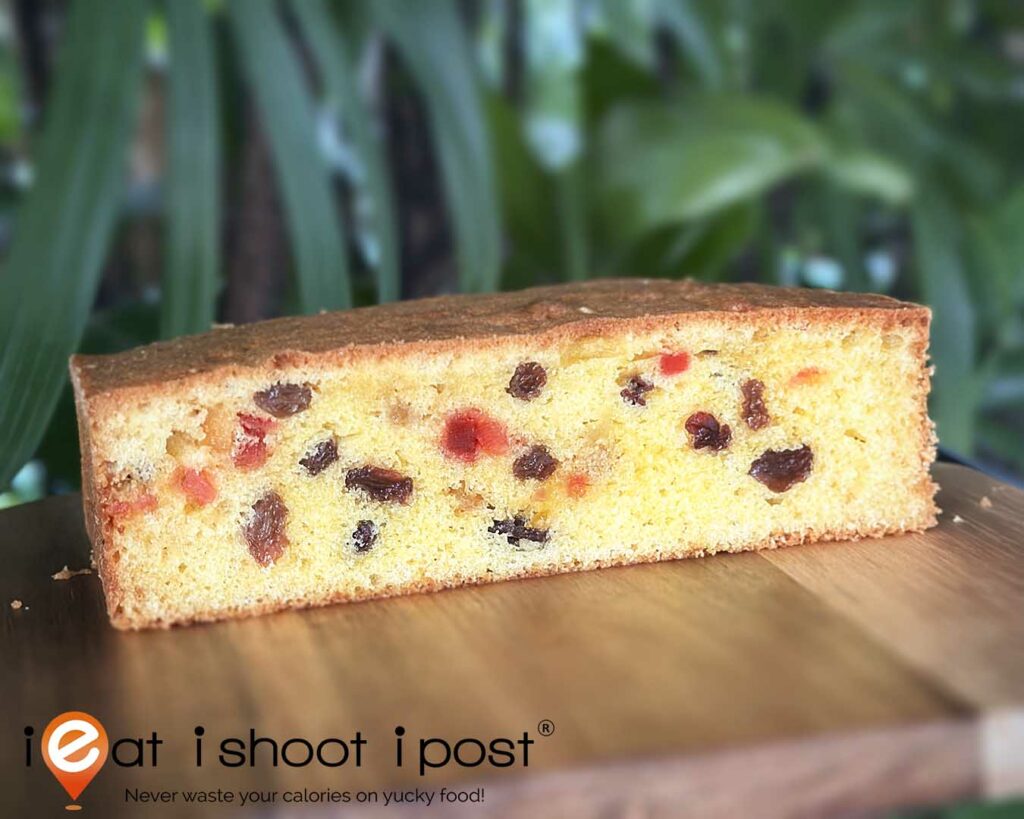
I wanted to ensure that the hack worked with other dried fruit, so I baked a cake using my new recipe with mixed dried fruit, and it turned out very well. The only other thing I did to this cake was to add about 1 cm of plain batter to the bottom of the pan before adding the fruit to the rest of the batter and filling the cake pan. The extra batter created a nice margin at the bottom of the cake, making it look more appealing. I also gently pressed down the fruit on the top of the cake with the tip of my spatula so I could smooth out the top of the cake.
Leslie’s Light Fruitcake Recipe
This is essentially my butter cake recipe with the only modification being the substitution of 20g of cake flour with pre-gelatinized starch and the addition of dried fruit.
Ingredients
Yellow Team
1. Butter 250g (1 block)
2. Castor sugar 130g
3. Sour Cream 45g (3 Tbsp)
4. Egg yolk 70g (from 4x60g eggs)
5. Vanilla extract/essence 1 tsp
6. Salt 1/4 tsp
7. Butter oil 1/2 tsp (optional)
8. Cake flour 160g with 1.5 tsp baking powder)
9. Pre-gelatinized starch 20g
White Team
1. Egg whites 150g (from 4x60g eggs)
2. Cream of Tartar 1/2 tsp
Dried Fruit 80g (60g to 150g is fine)
Optional (soak in 2 Toby’s brandy or rum overnight)
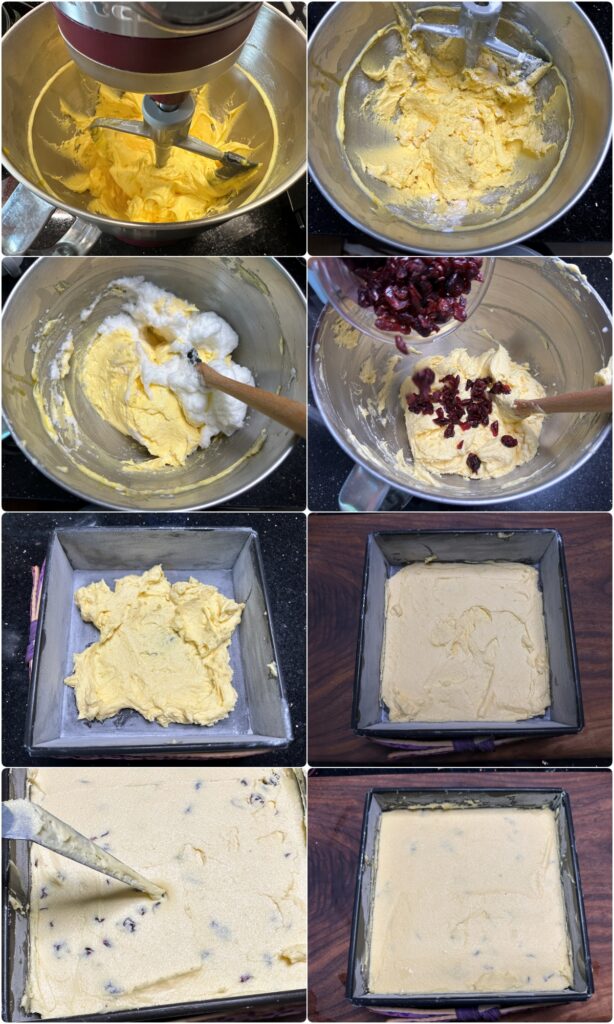
Method
- Bring the butter out of the fridge, cut it into 2 cm slices, and place in a mixing bowl to thaw.
- Separate the eggs while still cold
- Use the butter wrapper to oil the cake tin
- Coat the inside of the cake tin with flour. Wet the baking strips (if using) and secure them around the cake pan.
- Fit the flex edge beater and beat at medium speed (6) the butter until it is soft. Temperature should be around 15°C. It should still be cool to touch and you should easily be able to indent it with your fingertip.
- Add castor sugar and beat for 4mins or until pale and fluffy
- Add sour cream and mix till fully incorporated
- Add yolks one at a time. Mix each yolk until fully incorporated before adding the next yolk
- Add salt, vanilla essence, and butter oil (if using) and mix till incorporated. Set aside.
- Whip egg whites at medium speed till foamy
- Add cream of tartar and whip till stiff peaks
- Sift the flour and add to the yellow team. Mix at low speed (2) till all the flour has almost disappeared.
- Add 1/3 of the whipped egg whites to batter and fold whites gently into the batter till well incorporated.
- Add the rest of the egg whites in two stages and mix till well incorporated.
- Add one 1 cup of batter to the cake tin and smoothen to form an even layer around 1cm thick
- Add dried fruit to the rest of the batter and mix till evenly distributed
- Add the rest of the batter to the cake pan
- Using the tip of the spatula, gently push down any dried fruit on top and smoothen the top of the cake so there is no dried fruit exposed
- Bake at 160°C for 50 minutes or until the top of the cake springs back and a cake tester stick comes out clean.
- Invert the cake on a cooling rack, remove the pan and allow to cool completely before serving.
Note: There is still some benefit in flouring the fruit especially if your dried fruit is a little sticky, the flour would help to separate them. It would also still help the fruit from sinking to a certain extent so you should be able to use less of the pre-gelatinized flour.
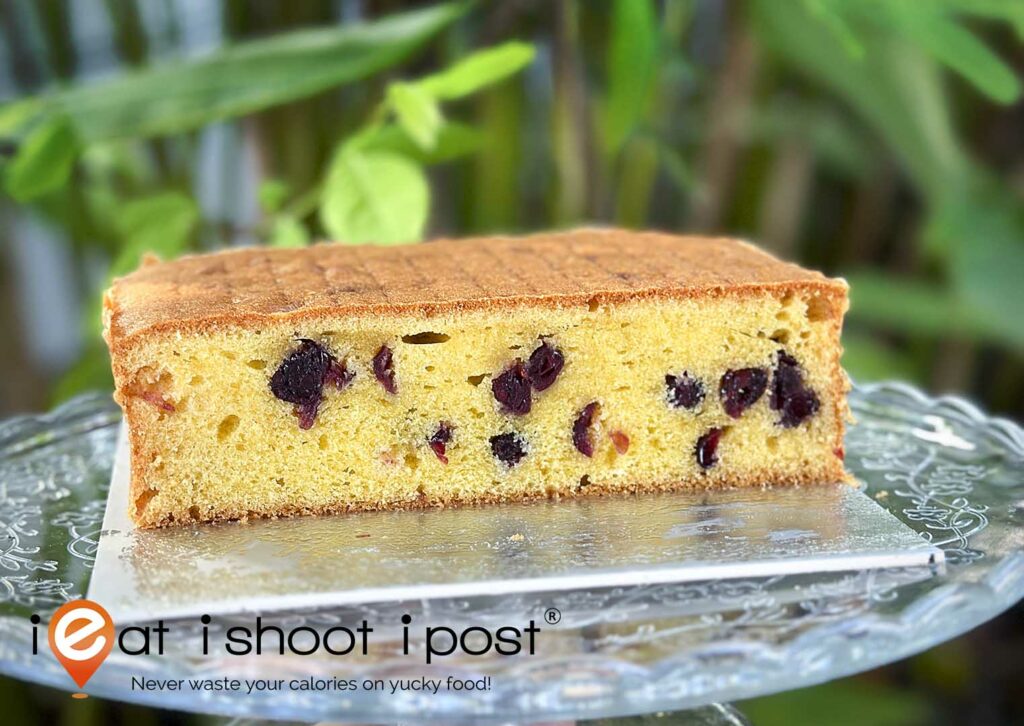
Please refer to my video for butter cake for reference first
I’ll film a separate video in the future!
Conclusion
New foolproof method to ensure there is no more sinking fruit in your light and buttery fruit cake!




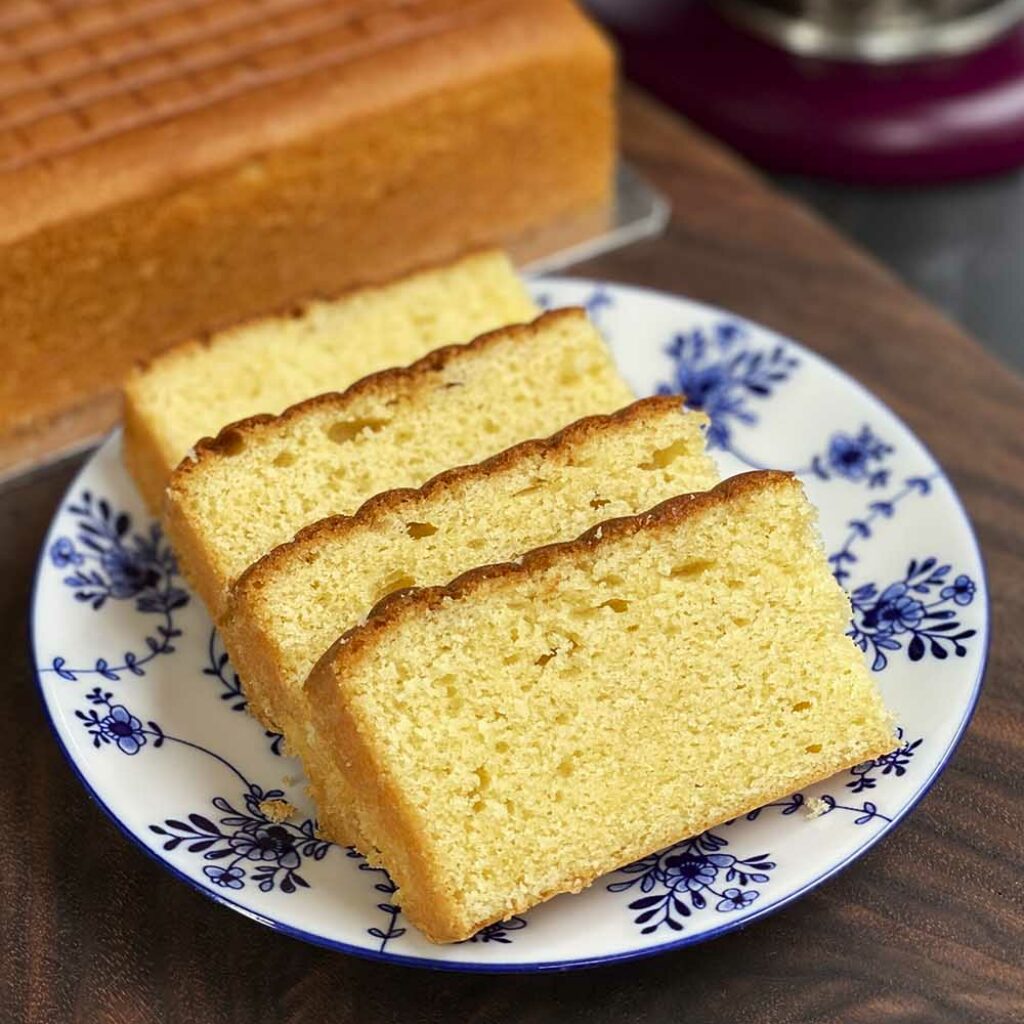






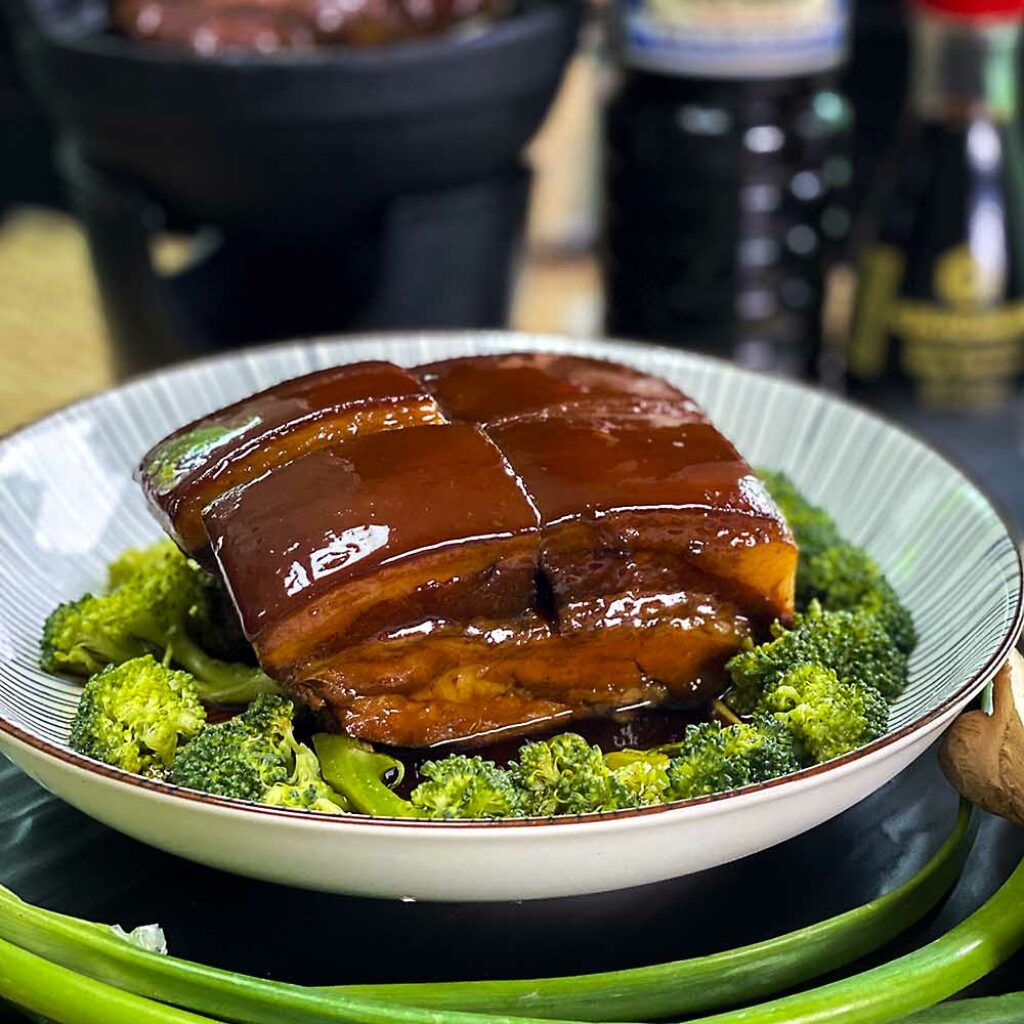



Where to buy the butter oil? Thks
You can find it at Ailin Bakery, Redman and other specialty bakery supply stores
Thank you, Dr Leslie Tay
Welcome
Leslie you’re a genius!!!!!
God is good!
My raisins are soaked in rum. Do I still use the same ratio of pre – gelatinized starch?
I haven’t tried it but it should still work. I would coat the soaked raisins in some of the flour because it is wet. Let me know how it goes because I have yet to try it.
Just chance upon this. Thank you Leslie!!!
Oh, you are very welcome!